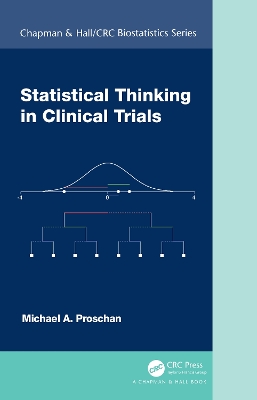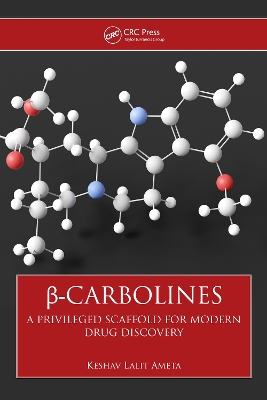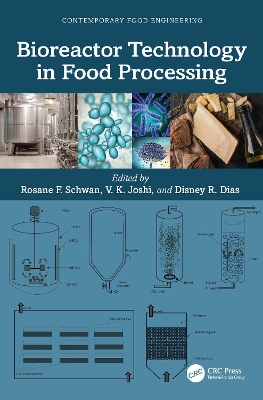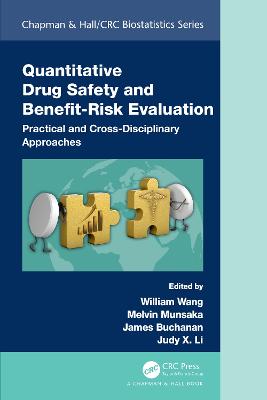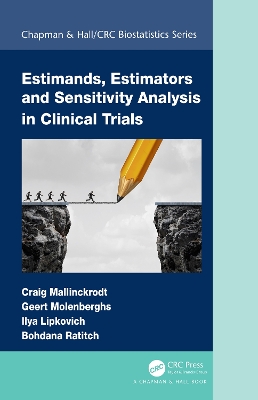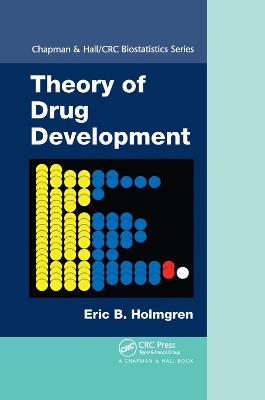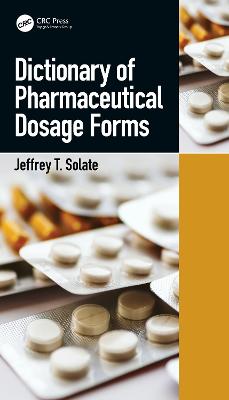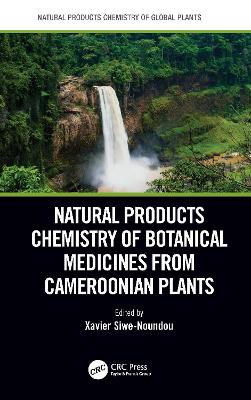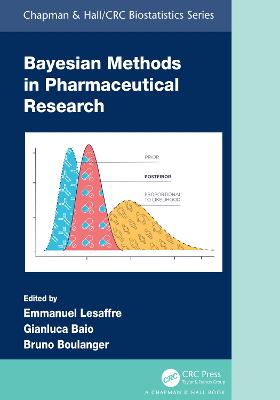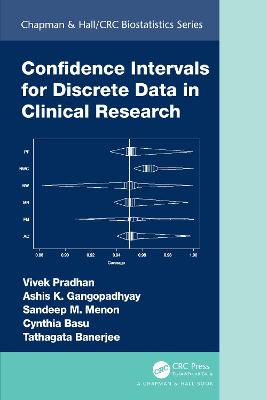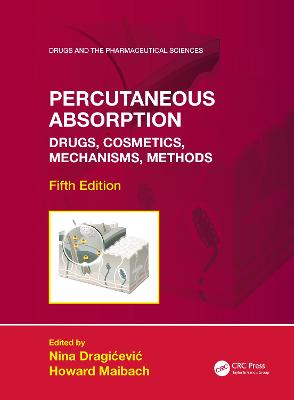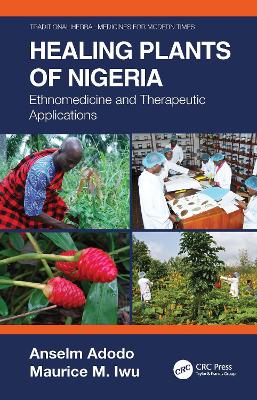Analytical Similarity Assessment in Biosimilar Product Development
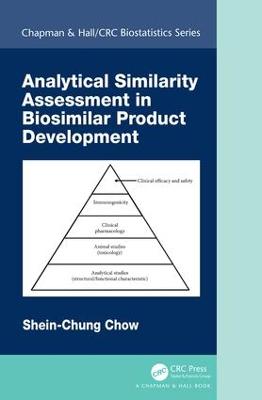 -10%
portes grátis
-10%
portes grátis
Analytical Similarity Assessment in Biosimilar Product Development
Chow, Shein-Chung
Taylor & Francis Ltd
08/2018
340
Dura
Inglês
9781138307339
15 a 20 dias
445
Preface.......................................................................................................................xi
Author.................................................................................................................... xiii
1. Introduction......................................................................................................1
1.1 Background.............................................................................................1
1.2 Past Experience for In Vitro Bioequivalence Testing.........................4
1.2.1 Study Design and Data Collection.........................................5
1.2.2 Bioequivalence Limit................................................................7
1.2.3 Statistical Methods...................................................................8
1.2.4 Sample Size Requirement...................................................... 12
1.3 Analytical Similarity Assessment..................................................... 13
1.3.1 Tier 1 Equivalence Test........................................................... 13
1.3.2 Tier 2 Quality Range Approach............................................ 14
1.3.3 Tier 3 Raw Data and Graphical Comparison...................... 16
1.4 Scientific Factors and Practical Issues............................................... 16
1.4.1 Fundamental Similarity Assumption.................................. 16
1.4.2 Primary Assumptions for Tiered Approach....................... 18
1.4.3 Fixed Approach for Margin Selection.................................. 19
1.4.4 Inconsistent Test Results between Tiered Approaches.....20
1.4.5 Sample Size Requirement...................................................... 21
1.4.6 Relationship between Similarity Limit and Variability.... 21
1.4.7 Regulator's Current Thinking on Scientific Input.............22
1.4.8 A Proposed Unified Tiered Approach.................................23
1.4.9 Practical Issues........................................................................25
1.4.10 Remarks....................................................................................26
1.5 Aim and Scope of the Book................................................................27
2. Regulatory Approval Pathway of Biosimilar Products.........................29
2.1 Introduction..........................................................................................29
2.2 Regulatory Requirements................................................................... 31
2.2.1 World Health Organization (WHO)..................................... 32
2.2.2 European Union (EU).............................................................34
2.2.3 North America (United States of America and Canada)...... 37
2.2.4 Asian Pacific Region (Japan, South Korea, and China)..... 39
2.2.5 Debatable Issues in Regulatory Requirements...................40
2.3 Analytical Studies for Structural/Functional Characteristics......45
2.4 Global Harmonization........................................................................48
2.5 Conclusion Remarks............................................................................ 51
3. CMC Requirements for Biological Products............................................53
3.1 Introduction..........................................................................................53
3.2 CMC Development..............................................................................54
3.2.1 Fermentation and Purification Process................................54
3.2.2 Drug Substance and Product Characterization..................55
3.2.3 Reference Standards and Container Closure System........ 57
3.2.4 Practical Issues........................................................................58
3.3 Manufacturing Process Validation....................................................58
3.3.1 Manufacturing Process..........................................................58
3.3.2 Process Validation................................................................... 61
3.3.3 Practical Issues........................................................................ 62
3.4 Quality Control and Assurance.........................................................63
3.4.1 General Principles...................................................................63
3.4.2 Quality by Design...................................................................64
3.5 Stability Analysis................................................................................. 69
3.6 Concluding Remarks...........................................................................75
4. Analytical Method Validation....................................................................77
4.1 Introduction..........................................................................................77
4.2 Regulatory Requirements................................................................... 78
4.2.1 FDA Guidance on Analytical Procedures
and Methods Validation........................................................ 78
4.2.2 ICH Guidance on Assay Validation.....................................80
4.2.3 United States Pharmacopeia and National
Formulary (USP/NF).............................................................. 81
4.3 Analytical Method Validation............................................................82
4.3.1 Validation Performance Characteristics..............................82
4.3.2 Study Design...........................................................................82
4.3.3 Choice of Validation Performance Characteristics............84
4.3.4 Acceptance Criteria................................................................85
4.4 Analysis of Validation Data................................................................86
4.4.1 Assessment of Accuracy, Linearity, and Specificity..........86
4.4.2 The Assessment of Assay Parameters Related
to Variability............................................................................ 91
4.5 Evaluation of Reliability, Repeatability, and Reproducibility.......95
4.5.1 Study Design and Statistical Model.....................................96
4.5.2 Variability Monitoring...........................................................98
4.5.3 Sample Size for Comparing Variabilities............................98
4.5.4 An Example........................................................................... 100
4.6 Concluding Remarks......................................................................... 102
5. Critical Quality Attributes........................................................................ 105
5.1 Background......................................................................................... 105
5.2 Identification of CQAs....................................................................... 106
5.2.1 Link between CQAs and Clinical Outcomes.................... 106
5.2.2 Statistical Design and Methods.......................................... 107
5.3 Stepwise Approach for Demonstrating Biosimilarity.................. 112
5.4 Tier Assignment for Critical Quality Attributes........................... 114
5.4.1 Criticality or Risk Ranking.................................................. 114
5.4.2 Statistical Model.................................................................... 116
5.4.3 Validity of the Translational Model...................................122
5.4.4 Two-Way Translational Process.......................................... 123
5.4.5 Remarks.................................................................................. 124
5.5 Concluding Remarks......................................................................... 125
6. FDA Tiered Approach for Analytical Similarity Assessment........... 127
6.1 Background......................................................................................... 127
6.2 Stepwise Approach for Demonstrating Biosimilarity.................. 128
6.3 Tier 1 Equivalence Test...................................................................... 129
6.4 Other Tiered Approaches................................................................. 136
6.4.1 Quality Range Approach for Tier 2.................................... 136
6.4.2 Raw Data and Graphical Comparison for Tier 3.............. 139
6.5 Some Practical Considerations......................................................... 141
6.6 Concluding Remarks......................................................................... 145
7. Sample Size Requirement.......................................................................... 147
7.1 Introduction........................................................................................ 147
7.2 Traditional Approach........................................................................ 148
7.2.1 Power Calculation................................................................. 148
7.2.2 Alternative Criteria for Sample Size Calculation............. 150
7.3 FDA's Current Thinking and Recommendation............................ 150
7.3.1 FDA's Current Thinking...................................................... 150
7.3.2 FDA's Recommendation....................................................... 152
7.4 Sample Size Requirement................................................................. 156
7.4.1 Chow et al.'s Proposal for Test/Reference Lots
Selection................................................................................. 156
7.4.2 Recent Development............................................................. 159
7.5 Numerical Studies............................................................................. 163
7.6 Concluding Remarks......................................................................... 163
Appendix....................................................................................................... 167
8. Analytical Studies with Multiple References....................................... 173
8.1 Background......................................................................................... 173
8.2 Method of Pairwise Comparisons................................................... 174
8.2.1 Equivalence Test for Tier 1 CQAs....................................... 174
8.2.2 Pairwise Comparisons with Multiple References............ 176
8.2.3 An Example........................................................................... 177
8.3 Simultaneous Confidence Approach............................................... 179
8.3.1 Assumptions and Statistical Framework.......................... 179
8.3.2 Simultaneous Confidence Interval with
the Assumption that T R R 1 2................................... 181
8.3.3 Simultaneous Confidence Interval without
the Assumption of T R R 1 2...................................... 185
8.3.4 An Example........................................................................... 192
8.4 Reference Product Change............................................................... 193
8.4.1 Kang and Chow's Approach............................................... 194
8.4.2 Criteria for Biosimilarity...................................................... 195
8.4.3 Statistical Tests for Biosimilarity........................................ 196
8.4.4 Remarks..................................................................................200
8.5 Concluding Remarks......................................................................... 202
9. Extrapolation across Indications..............................................................203
9.1 Introduction........................................................................................203
9.2 An Example.........................................................................................204
9.3 Development of Sensitivity Index................................................... 207
9.4 Assessment of Sensitivity Index......................................................209
9.4.1 The Case Where ? Is Random and C Is Fixed...................209
9.4.2 The Case Where ? Is Fixed and C Is Random................... 211
9.4.3 The Case Where Both ? and C Are Random..................... 214
9.5 Statistical Inference of Extrapolation.............................................. 217
9.5.1 The Case Where ? Is Random and C Is Fixed................... 218
9.5.2 The Case Where ? Is Fixed and C Is Random...................220
9.5.3 The Case Where ? and C Are Random.............................. 221
9.5.4 The Confidence Interval of the Effect Size
in Original Population.........................................................222
9.5.5 An Example...........................................................................223
9.6 Concluding Remarks.........................................................................225
Appendix.......................................................................................................225
10. Case Studies - Recent FDA Biosimilar Submissions...........................229
10.1 FDA Abbreviated Licensure Pathway.............................................229
10.2 Sponsor's Strategy for Regulatory Submission.............................. 231
10.3 Avastin Biosimilar Regulatory Submission...................................233
10.4 Herceptin Biosimilar......................................................................... 241
10.5 Concluding Remarks......................................................................... 246
11. Practical and Challenging Issues............................................................. 249
11.1 Introduction........................................................................................ 249
11.2 Hypotheses Testing versus Confidence Interval Approach........250
11.2.1 Interval Hypotheses Testing...............................................250
11.2.2 Confidence Interval Approach............................................ 251
11.2.3 Remarks.................................................................................. 252
11.3 Totality-of-the-Evidence....................................................................253
11.3.1 Primary Assumptions of Stepwise Approach..................253
11.3.2 Relationships among Analytical, PK/PD,
and Clinical Similarity.........................................................254
11.3.3 Practical Issues......................................................................256
11.3.4 Examples................................................................................ 257
11.3.5 Remarks..................................................................................258
11.4 Inconsistencies between Tiered Approaches................................. 259
11.4.1 In Vitro Bioequivalence Testing versus Analytical
Testing.................................................................................... 259
11.4.2 Primary Assumptions for Tiered Approach.....................260
11.4.3 Inconsistencies between Different Tiered Tests...............260
11.5 Individual Bioequivalence................................................................ 261
11.6 Commonly Asked Questions from the Sponsors..........................263
11.7 Concluding Remarks......................................................................... 270
12. Recent Development................................................................................... 273
12.1 Introduction........................................................................................ 273
12.2 Comparing Means versus Comparing Variances......................... 274
12.2.1 Generally Similar versus Highly Similar.......................... 275
12.2.2 Similarity Test in Variability............................................... 275
12.2.3 Remarks..................................................................................277
12.3 Switching Design...............................................................................277
12.3.1 Introduction...........................................................................277
12.3.2 Concept and Criteria for Drug Interchangeability.......... 278
12.3.3 Hybrid Parallel-Crossover Design..................................... 279
12.3.4 Statistical Model and Analysis........................................... 282
12.3.5 Sample Size Requirement.................................................... 287
12.4 Non-Medical Switching.................................................................... 294
12.4.1 Introduction........................................................................... 295
12.4.2 Approaches for Evaluation of Non-Medical Switch........ 296
12.4.3 Clinical Studies.....................................................................299
12.4.4 Scientific Factors and Statistical Considerations..............302
12.4.4.1 Scientific Factors....................................................302
12.4.4.2 Statistical Considerations.....................................303
12.4.5 Design and Analysis of Switching Studies.......................305
12.5 FDA Draft Guidance on Analytical Similarity Assessment........306
12.6 Concluding Remarks.........................................................................309
References and Further Reading..................................................................... 311
Index...................................................................................................................... 321
Preface.......................................................................................................................xi
Author.................................................................................................................... xiii
1. Introduction......................................................................................................1
1.1 Background.............................................................................................1
1.2 Past Experience for In Vitro Bioequivalence Testing.........................4
1.2.1 Study Design and Data Collection.........................................5
1.2.2 Bioequivalence Limit................................................................7
1.2.3 Statistical Methods...................................................................8
1.2.4 Sample Size Requirement...................................................... 12
1.3 Analytical Similarity Assessment..................................................... 13
1.3.1 Tier 1 Equivalence Test........................................................... 13
1.3.2 Tier 2 Quality Range Approach............................................ 14
1.3.3 Tier 3 Raw Data and Graphical Comparison...................... 16
1.4 Scientific Factors and Practical Issues............................................... 16
1.4.1 Fundamental Similarity Assumption.................................. 16
1.4.2 Primary Assumptions for Tiered Approach....................... 18
1.4.3 Fixed Approach for Margin Selection.................................. 19
1.4.4 Inconsistent Test Results between Tiered Approaches.....20
1.4.5 Sample Size Requirement...................................................... 21
1.4.6 Relationship between Similarity Limit and Variability.... 21
1.4.7 Regulator's Current Thinking on Scientific Input.............22
1.4.8 A Proposed Unified Tiered Approach.................................23
1.4.9 Practical Issues........................................................................25
1.4.10 Remarks....................................................................................26
1.5 Aim and Scope of the Book................................................................27
2. Regulatory Approval Pathway of Biosimilar Products.........................29
2.1 Introduction..........................................................................................29
2.2 Regulatory Requirements................................................................... 31
2.2.1 World Health Organization (WHO)..................................... 32
2.2.2 European Union (EU).............................................................34
2.2.3 North America (United States of America and Canada)...... 37
2.2.4 Asian Pacific Region (Japan, South Korea, and China)..... 39
2.2.5 Debatable Issues in Regulatory Requirements...................40
2.3 Analytical Studies for Structural/Functional Characteristics......45
2.4 Global Harmonization........................................................................48
2.5 Conclusion Remarks............................................................................ 51
3. CMC Requirements for Biological Products............................................53
3.1 Introduction..........................................................................................53
3.2 CMC Development..............................................................................54
3.2.1 Fermentation and Purification Process................................54
3.2.2 Drug Substance and Product Characterization..................55
3.2.3 Reference Standards and Container Closure System........ 57
3.2.4 Practical Issues........................................................................58
3.3 Manufacturing Process Validation....................................................58
3.3.1 Manufacturing Process..........................................................58
3.3.2 Process Validation................................................................... 61
3.3.3 Practical Issues........................................................................ 62
3.4 Quality Control and Assurance.........................................................63
3.4.1 General Principles...................................................................63
3.4.2 Quality by Design...................................................................64
3.5 Stability Analysis................................................................................. 69
3.6 Concluding Remarks...........................................................................75
4. Analytical Method Validation....................................................................77
4.1 Introduction..........................................................................................77
4.2 Regulatory Requirements................................................................... 78
4.2.1 FDA Guidance on Analytical Procedures
and Methods Validation........................................................ 78
4.2.2 ICH Guidance on Assay Validation.....................................80
4.2.3 United States Pharmacopeia and National
Formulary (USP/NF).............................................................. 81
4.3 Analytical Method Validation............................................................82
4.3.1 Validation Performance Characteristics..............................82
4.3.2 Study Design...........................................................................82
4.3.3 Choice of Validation Performance Characteristics............84
4.3.4 Acceptance Criteria................................................................85
4.4 Analysis of Validation Data................................................................86
4.4.1 Assessment of Accuracy, Linearity, and Specificity..........86
4.4.2 The Assessment of Assay Parameters Related
to Variability............................................................................ 91
4.5 Evaluation of Reliability, Repeatability, and Reproducibility.......95
4.5.1 Study Design and Statistical Model.....................................96
4.5.2 Variability Monitoring...........................................................98
4.5.3 Sample Size for Comparing Variabilities............................98
4.5.4 An Example........................................................................... 100
4.6 Concluding Remarks......................................................................... 102
5. Critical Quality Attributes........................................................................ 105
5.1 Background......................................................................................... 105
5.2 Identification of CQAs....................................................................... 106
5.2.1 Link between CQAs and Clinical Outcomes.................... 106
5.2.2 Statistical Design and Methods.......................................... 107
5.3 Stepwise Approach for Demonstrating Biosimilarity.................. 112
5.4 Tier Assignment for Critical Quality Attributes........................... 114
5.4.1 Criticality or Risk Ranking.................................................. 114
5.4.2 Statistical Model.................................................................... 116
5.4.3 Validity of the Translational Model...................................122
5.4.4 Two-Way Translational Process.......................................... 123
5.4.5 Remarks.................................................................................. 124
5.5 Concluding Remarks......................................................................... 125
6. FDA Tiered Approach for Analytical Similarity Assessment........... 127
6.1 Background......................................................................................... 127
6.2 Stepwise Approach for Demonstrating Biosimilarity.................. 128
6.3 Tier 1 Equivalence Test...................................................................... 129
6.4 Other Tiered Approaches................................................................. 136
6.4.1 Quality Range Approach for Tier 2.................................... 136
6.4.2 Raw Data and Graphical Comparison for Tier 3.............. 139
6.5 Some Practical Considerations......................................................... 141
6.6 Concluding Remarks......................................................................... 145
7. Sample Size Requirement.......................................................................... 147
7.1 Introduction........................................................................................ 147
7.2 Traditional Approach........................................................................ 148
7.2.1 Power Calculation................................................................. 148
7.2.2 Alternative Criteria for Sample Size Calculation............. 150
7.3 FDA's Current Thinking and Recommendation............................ 150
7.3.1 FDA's Current Thinking...................................................... 150
7.3.2 FDA's Recommendation....................................................... 152
7.4 Sample Size Requirement................................................................. 156
7.4.1 Chow et al.'s Proposal for Test/Reference Lots
Selection................................................................................. 156
7.4.2 Recent Development............................................................. 159
7.5 Numerical Studies............................................................................. 163
7.6 Concluding Remarks......................................................................... 163
Appendix....................................................................................................... 167
8. Analytical Studies with Multiple References....................................... 173
8.1 Background......................................................................................... 173
8.2 Method of Pairwise Comparisons................................................... 174
8.2.1 Equivalence Test for Tier 1 CQAs....................................... 174
8.2.2 Pairwise Comparisons with Multiple References............ 176
8.2.3 An Example........................................................................... 177
8.3 Simultaneous Confidence Approach............................................... 179
8.3.1 Assumptions and Statistical Framework.......................... 179
8.3.2 Simultaneous Confidence Interval with
the Assumption that T R R 1 2................................... 181
8.3.3 Simultaneous Confidence Interval without
the Assumption of T R R 1 2...................................... 185
8.3.4 An Example........................................................................... 192
8.4 Reference Product Change............................................................... 193
8.4.1 Kang and Chow's Approach............................................... 194
8.4.2 Criteria for Biosimilarity...................................................... 195
8.4.3 Statistical Tests for Biosimilarity........................................ 196
8.4.4 Remarks..................................................................................200
8.5 Concluding Remarks......................................................................... 202
9. Extrapolation across Indications..............................................................203
9.1 Introduction........................................................................................203
9.2 An Example.........................................................................................204
9.3 Development of Sensitivity Index................................................... 207
9.4 Assessment of Sensitivity Index......................................................209
9.4.1 The Case Where ? Is Random and C Is Fixed...................209
9.4.2 The Case Where ? Is Fixed and C Is Random................... 211
9.4.3 The Case Where Both ? and C Are Random..................... 214
9.5 Statistical Inference of Extrapolation.............................................. 217
9.5.1 The Case Where ? Is Random and C Is Fixed................... 218
9.5.2 The Case Where ? Is Fixed and C Is Random...................220
9.5.3 The Case Where ? and C Are Random.............................. 221
9.5.4 The Confidence Interval of the Effect Size
in Original Population.........................................................222
9.5.5 An Example...........................................................................223
9.6 Concluding Remarks.........................................................................225
Appendix.......................................................................................................225
10. Case Studies - Recent FDA Biosimilar Submissions...........................229
10.1 FDA Abbreviated Licensure Pathway.............................................229
10.2 Sponsor's Strategy for Regulatory Submission.............................. 231
10.3 Avastin Biosimilar Regulatory Submission...................................233
10.4 Herceptin Biosimilar......................................................................... 241
10.5 Concluding Remarks......................................................................... 246
11. Practical and Challenging Issues............................................................. 249
11.1 Introduction........................................................................................ 249
11.2 Hypotheses Testing versus Confidence Interval Approach........250
11.2.1 Interval Hypotheses Testing...............................................250
11.2.2 Confidence Interval Approach............................................ 251
11.2.3 Remarks.................................................................................. 252
11.3 Totality-of-the-Evidence....................................................................253
11.3.1 Primary Assumptions of Stepwise Approach..................253
11.3.2 Relationships among Analytical, PK/PD,
and Clinical Similarity.........................................................254
11.3.3 Practical Issues......................................................................256
11.3.4 Examples................................................................................ 257
11.3.5 Remarks..................................................................................258
11.4 Inconsistencies between Tiered Approaches................................. 259
11.4.1 In Vitro Bioequivalence Testing versus Analytical
Testing.................................................................................... 259
11.4.2 Primary Assumptions for Tiered Approach.....................260
11.4.3 Inconsistencies between Different Tiered Tests...............260
11.5 Individual Bioequivalence................................................................ 261
11.6 Commonly Asked Questions from the Sponsors..........................263
11.7 Concluding Remarks......................................................................... 270
12. Recent Development................................................................................... 273
12.1 Introduction........................................................................................ 273
12.2 Comparing Means versus Comparing Variances......................... 274
12.2.1 Generally Similar versus Highly Similar.......................... 275
12.2.2 Similarity Test in Variability............................................... 275
12.2.3 Remarks..................................................................................277
12.3 Switching Design...............................................................................277
12.3.1 Introduction...........................................................................277
12.3.2 Concept and Criteria for Drug Interchangeability.......... 278
12.3.3 Hybrid Parallel-Crossover Design..................................... 279
12.3.4 Statistical Model and Analysis........................................... 282
12.3.5 Sample Size Requirement.................................................... 287
12.4 Non-Medical Switching.................................................................... 294
12.4.1 Introduction........................................................................... 295
12.4.2 Approaches for Evaluation of Non-Medical Switch........ 296
12.4.3 Clinical Studies.....................................................................299
12.4.4 Scientific Factors and Statistical Considerations..............302
12.4.4.1 Scientific Factors....................................................302
12.4.4.2 Statistical Considerations.....................................303
12.4.5 Design and Analysis of Switching Studies.......................305
12.5 FDA Draft Guidance on Analytical Similarity Assessment........306
12.6 Concluding Remarks.........................................................................309
References and Further Reading..................................................................... 311
Index...................................................................................................................... 321

